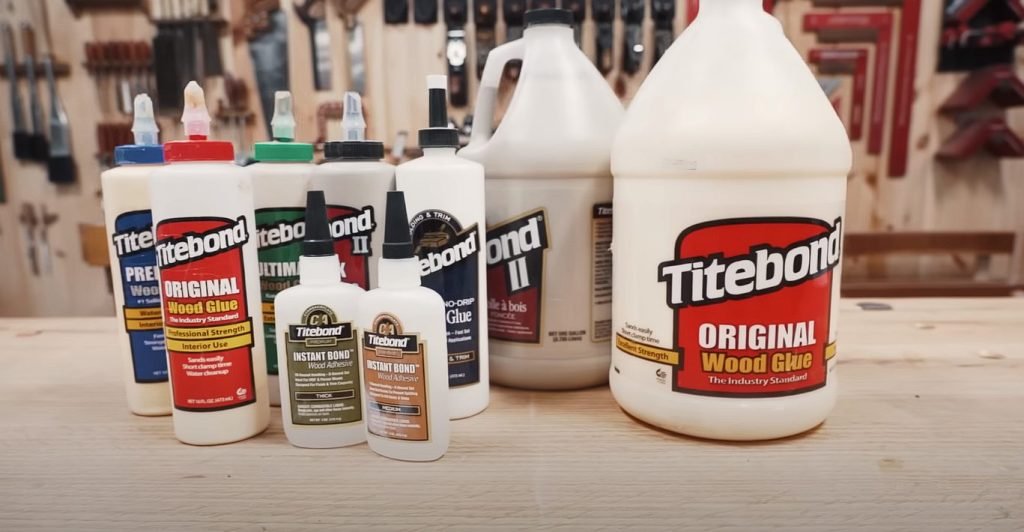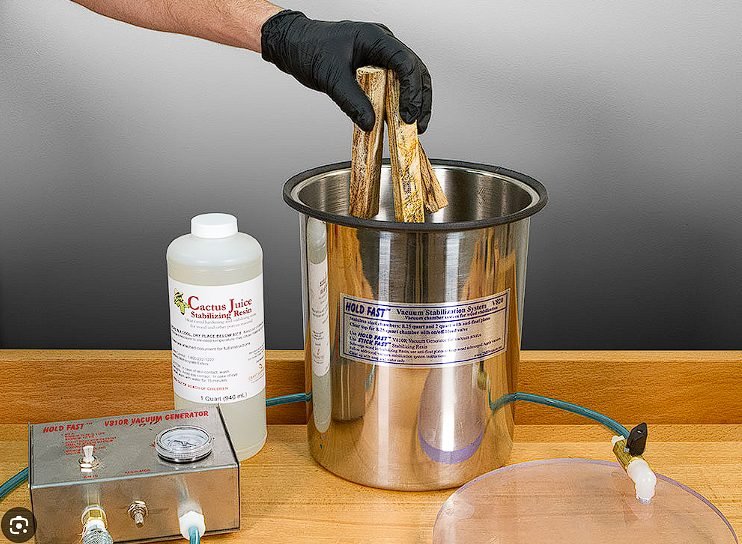Table of Contents
In 2024, new wood-turning materials like acrylic and resins, tagua nuts, and recycled materials will be used in cuts for table saw projects and applications. These materials look good and help the environment. Technology may also bring new composite materials, making woodturning projects more robust and flexible.

1. Acrylics and Resins
Acrylics and resins are synthetic materials that have become immensely popular in the woodturning community for their versatility and vibrant aesthetics. When mixed with dyes, pigments, or even encapsulating objects such as flowers, shells, or metal pieces, they can create mesmerizing effects that are impossible with Wood alone. The process involves casting the resin into molds to form blanks, which are then turned on a lathe. This material is favored for its ability to achieve a high gloss finish, making it ideal for decorative items like vases, bowls, and especially pens, where the depth and clarity of the resin add a luxurious touch.
2. Stabilized Wood
Stabilized Wood is produced by impregnating porous Wood with a special resin under high pressure. This resin fills the Wood’s pores and hardens, significantly enhancing the Wood’s strength, stability, and resistance to environmental factors. The stabilization process preserves the Wood and amplifies its natural beauty, making it an excellent choice for high-end, heirloom-quality projects. Stabilized Wood is trendy for items that will be handled frequently or exposed to moisture, such as knife handles, pens, and jewelry, as it maintains its integrity and appearance over time.

3. Alumilite
Alumilite is a brand of thermosetting plastic resins that have found a special place in woodturning for their exceptional qualities. Unlike traditional resins, humility offers a shorter curing time and a wide range of color possibilities, including transparent, opaque, fluorescent, and phosphorescent effects. Woodturners use Alumilite to create blanks that combine Wood and resin in stunning patterns or to cast unique shapes and objects that can be turned into eye-catching pieces. Its ability to mimic the appearance of glass, precious stones, or metal makes Alumilite a favorite for creating custom pens, bottle stoppers, and other small but exquisite items.

4. Corian and Similar Solid Surfaces
Corian, a brand name for a solid surface material, is composed of acrylic polymer and natural minerals. It’s known for its durability, resistance to stains, and seamless appearance. Corian and similar materials are valued for their uniformity and ease of maintenance in woodturning, offering a contemporary alternative to natural Wood. These materials can be turned to produce kitchenware, such as bowls and utensils, and decorative objects, providing a modern look and feel that is different from traditional wood items. The vast array of colors and patterns available in Corian-like materials allows turners to experiment with designs that can range from minimalist to complex.

5. Tagua Nuts
Tagua nuts, sourced from a type of palm tree found in South America, are a fascinating material for woodturners due to their close resemblance to ivory. Once dried, these nuts can be turned and carved with great detail, making them ideal for creating small sculptures, jewelry, and intricate decorative pieces. The use of Tagua nuts not only offers an ethical alternative to animal ivory but also supports sustainable practices, as it encourages the conservation of palm trees and provides economic opportunities for communities in the nuts’ native regions.

6. Antler and Bone
The use of antler and bone in woodturning connects modern crafters with ancient traditions. These materials require specific techniques due to their hardness and structure but reward the turner with results that are rich in texture and history. Turned antlers and bone can be used to make unique, rustic pieces such as knife handles, pens, and jewelry, each bearing the distinctive marks and colors of the material. The challenge lies in carefully selecting and preparing the antler or bone and mastering the turning process to avoid chipping and cracking.
7. Recycled Materials
The trend towards sustainability and eco-consciousness has led woodturners to explore using recycled materials. By embedding items like plastic bottle caps, paper, cloth, or metal pieces in resin, turners can create visually striking blanks and tell a story of repurposing and creativity. These materials offer endless possibilities for innovation, allowing turners to produce pieces that are as diverse as they are environmentally friendly. From colorful pens made from recycled plastics to bowls and vases incorporating recycled metals and fabrics, using recycled materials in woodturning represents a forward-thinking approach to the craft.
Each of these materials introduces new textures, colors, and challenges to woodturning, inviting artists to push the boundaries of their creativity and technical skills. Whether through the luminescent depths of resins or the rich history embedded.
Essential Equipment for Modern Woodturning
Lathes
Woodturning requires the right equipment, including a table saw and straight chisel, to achieve precision and quality. The most crucial tool for modern woodturners is the lathe. Various types of lathes are available, including benchtop lathes, mini-lathes, and full-size lathes. Each type offers precision cuts with specific features suited to woodturning projects.
A benchtop lathe with precision cuts is ideal for small-scale projects and hobbyists. In contrast, a full-size lathe provides more power and capacity for larger pieces with enhanced performance and features. Mini-lathes are compact and portable, making them suitable for precision cuts, beginners, or those with limited space. Understanding the differences in information, precision, cuts, and price between these options can help you choose the right one for your needs.
Chisels
Chisels are essential tools in woodturning, allowing artisans to shape and sculpt Wood with precision. The straight chisel is a fundamental tool that enables woodworkers to create precise, clean cuts on their projects. Exploring other types of chisels, such as bowls or spindle gouges, can expand your capabilities in turning different shapes and designs.
Compared to conventional options, innovative materials have revolutionized traditional woodworking tools like chisels by offering enhanced durability and cutting performance for projects.
Accessories
Other than primary equipment like lathes and chisels, accessories can significantly improve your woodturning experience. A fixed base router attachment allows you to create intricate designs on turned pieces using templates or jigs. This accessory adds versatility to your woodworking projects by enabling precise detailing work.
Exploring innovative accessories explicitly designed for modern woodturners can enhance creativity while simplifying complex tasks.
Unique Ideas for Woodturning
Everyday Items
Woodturning is not limited to traditional wooden blanks. Innovative woodturning materials include baseball bats, rolling pins, or discarded furniture legs. These objects offer unique shapes and textures that add character to the turned pieces.
I’ve found that turning a baseball bat into a vase creates an exciting juxtaposition of sports and art. The bat’s smooth cylindrical shape provides an excellent canvas for creative designs and patterns.
Natural Elements
Exploring unconventional materials also involves incorporating natural elements such as pine cones, seashells, or antlers into wood-turned creations. These mixed media pieces bring a touch of nature to the finished work, adding visual interest and depth.
Incorporating seashells into woodturned bowls or vases infuses a coastal aesthetic into the design, making it perfect for beach house decor.
Fusion of Materials
Artists can create stunning mixed media pieces by combining innovative woodturning materials with other mediums like resin, metal powders, or acrylic paints. Adding resin to woodturned projects allows for colorful inlays and captivating visual effects.
Mixing metal powders with epoxy resin opens up endless possibilities for creating unique metallic finishes on wooden objects.
Textural Contrast
Integrating mixed media techniques introduces textural contrast to Wood-turned items. For example, embedding crushed turquoise in resin within turned wooden bowls results in visually striking patterns and textures that elevate the overall aesthetic appeal.
Adding crushed glass to wooden platters can create dazzling reflective surfaces that catch the light beautifully.
Fiber Arts Integration with Woodturning
Enhancing Woodturning Projects
Integrating fiber arts into the process can enhance innovative woodturning materials. By incorporating textiles, yarn, or thread into turned pieces, artists can add a unique touch to their creations. For example, colorful threads around the Wood can create visually captivating patterns and textures.
Adding fiber arts to woodturned projects offers an opportunity to explore new techniques and expand creative possibilities. Combining different materials not only adds visual interest but also introduces tactile elements to the finished pieces. This integration allows for a seamless blend of traditional woodworking with contemporary textile artistry.
Techniques for Incorporation
One technique involves creating hollow forms in which fabric or yarn is embedded during turning. This method results in stunning vessels that showcase Wood’s natural beauty and the intricate patterns of textiles. Another approach includes turning wooden components designed explicitly as bases for weaving or wrapping fibers.
Experimenting with various types of fibers opens up endless opportunities for creativity. Whether incorporating delicate lace into a turned bowl or intertwining vibrant yarn around a spindle, each project becomes a unique expression of artistic fusion.
Safety and Maintenance in the Woodturning Workshop
Importance of Safety Measures
Safety should always be a top priority. Working with a lathe, such as when using a table saw, requires strict adherence to safety measures. Always wear protective gear like goggles, gloves, and an apron. Ensure that loose clothing and accessories are secured to avoid entanglement with rotating parts.
Consider installing proper ventilation in your workspace to minimize exposure to dust and fumes. Keep the floor clear of debris or spills that could cause slips or falls. When handling sharp tools or shop equipment, focus and work deliberately, avoiding distractions.
Proper Tool Maintenance
Maintaining your woodturning tools is crucial for optimal performance. Regularly sharpen blades and clean equipment after each use to prevent rust buildup. Store tools in a dry area away from moisture to prolong their lifespan.
Proper maintenance also extends to the lathe – ensure it’s well-oiled and debris-free for smooth operation. Periodically inspect cords on power tools like lathes or sanders for any signs of damage.
I find that organizing my tools on wall-mounted racks not only keeps them accessible but also reduces clutter on work surfaces.
Expanding Your Woodturning Inventory with Innovative Projects
Popular Items
Diversifying your inventory can open up new opportunities. One way to do this is by exploring popular items that sell well in the market. Add unique bottle stoppers, kitchen utensils, or decorative bowls to your collection. These items showcase your craftsmanship and cater to a wide variety of customers.
Adding these popular items can help you attract different types of buyers and increase your sales potential. For example, creating custom-designed pizza cutters with colorful acrylic handles or intricate wooden wine stoppers can appeal to a broader audience beyond traditional woodturning enthusiasts.
Expanding into these areas allows you to tap into new markets and reach a more diverse customer base while showcasing the versatility of your skills as a woodturner.
New Techniques and Styles
Exploring new techniques and styles is another effective way to diversify your product range. Embracing unconventional materials such as resin, hybrid blanks, or stabilized woods can set your creations apart from traditional Wood-turned pieces. By incorporating these innovative materials into your projects, you can offer customers unique and eye-catching designs that stand out in the market.
Experimenting with different shapes, textures, and finishes can further enhance the appeal of your products. For instance, combining natural wood elements with vibrant resin infills creates visually stunning contrasts that captivate buyers seeking one-of-a-kind pieces for their homes or gifts for loved ones.
Diversifying through new techniques keeps your work fresh and exciting and positions you as an artist who continuously evolves with current trends while maintaining exceptional craftsmanship.
The Business of Woodturning and Resources for Growth
Pricing and Marketing Strategies
Pricing your products can be a delicate balance. You want to ensure that the price reflects the quality and uniqueness of your items, but it also needs to appeal to potential buyers. Consider researching similar products in the market to understand competitive pricing. Leverage social media platforms like Instagram or Pinterest to showcase your creations and reach a wider audience.
As you explore innovative woodturning materials, consider incorporating environmentally friendly options such as reclaimed or recycled Wood. This eco-conscious approach can be a unique selling point for your products, appealing to customers who prioritize sustainability. Highlighting this aspect in your marketing strategy can set you apart from competitors while resonating with environmentally conscious consumers.
Showcasing and Selling Your Products
Utilize platforms like Etsy and Amazon Handmade or even create our website to showcase and sell your innovative Wood-turned pieces. These platforms provide access to a large customer base, offering exposure that may not be attainable through traditional brick-and-mortar stores alone.
Collaborating with local interior designers or furniture makers can also open new avenues for showcasing and selling your work. By tapping into these networks, you can gain visibility within different industries while expanding the reach of your innovative wood-turned creations.
Conclusion
New wood-turning materials offer lots of possibilities for artists. They can use different things and technology to be creative. It’s essential to keep up with new stuff and be safe. Being innovative helps artists grow their businesses and ensure they’re doing things well.
I want you to keep looking for new materials and ways to do woodturning. Being innovative helps you and the whole community.
Frequently Asked Questions
What are some examples of innovative woodturning materials?
Innovative woodturning materials include stabilized woods, acrylics, hybrid blanks (Wood and resin), and alternative natural materials like antler or stone. These materials offer unique aesthetics and can enhance the creativity of wood-turning projects.
How can I ensure safety in my woodturning workshop?
To ensure safety in your woodturning workshop, always wear appropriate personal protective equipment, maintain a clean workspace to prevent tripping hazards, use sharp tools to reduce kickback, and follow proper techniques for securing workpieces on the lathe.
What essential equipment do I need for modern woodturning?
Essential equipment for modern woodturning includes a lathe with variable speed control, high-quality turning tools such as gouges and chisels, a sharpening system for tool maintenance, face shields or goggles for eye protection, and dust extraction systems to maintain air quality.
How can I integrate fiber arts with woodturning projects?
You can integrate fiber arts with woodturning by incorporating elements such as hand-spun yarns into segmented turnings or creating wooden vessels to hold woven textiles. This fusion of woodworking and fiber arts adds an artistic dimension to your creations.
Where can I find resources for growing my business in woodturning?
Resources for growing your business in woodturning include industry-specific trade associations, online forums dedicated to woodworking entrepreneurs, workshops, or seminars focused on business development within the craft industry. Networking with established artisans can provide valuable insights.

